Emails – Letters – Tweets – Facebook – Instagram – Kit questions
Email us at inbox@skyatnightmagazine.com
MESSAGE OF THE MONTH
Mystery object
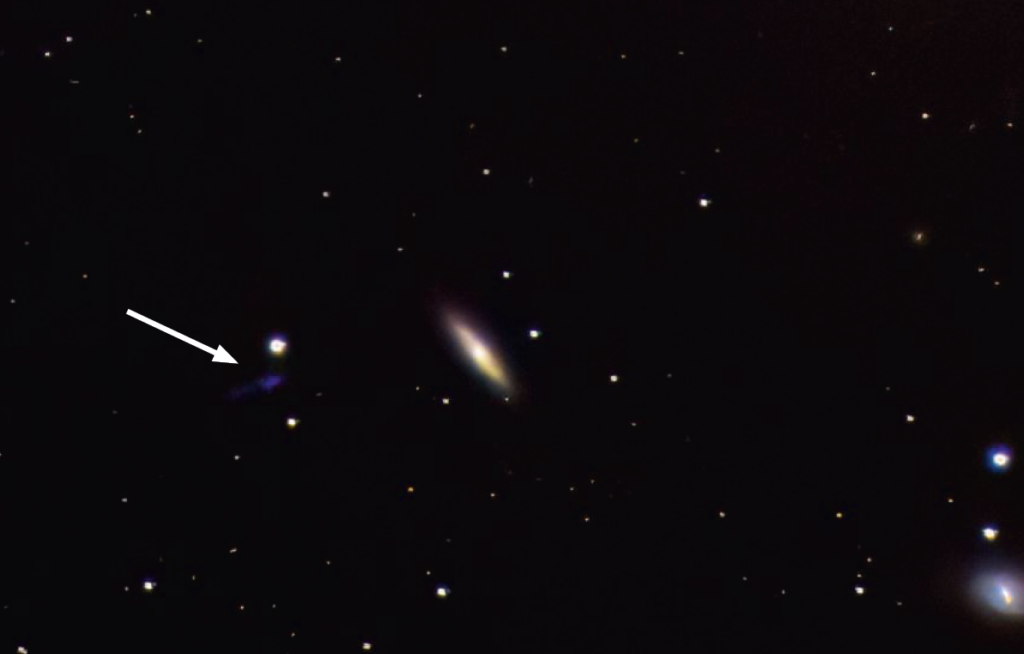
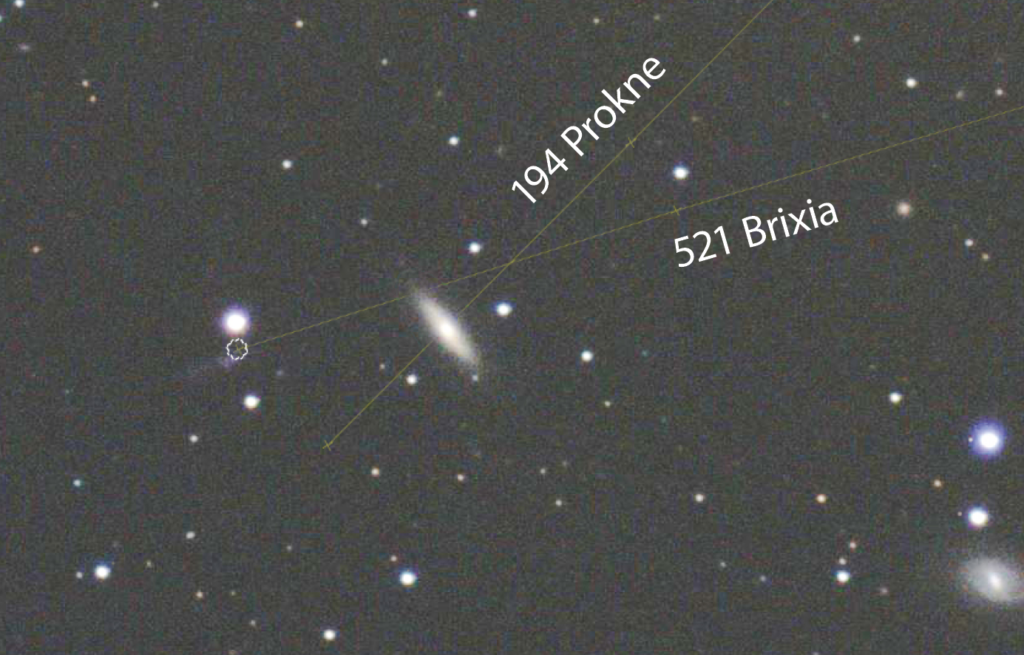
I took an image of Markarian’s Chain on 21 April and after I processed it, I noticed two very prominent, blue-shifted objects. One is galaxy IC 3355; however, there is a bigger and brighter one, near to galaxy NGC 4425, which doesn’t appear in any other image I’ve found. It’s clearly visible in my stacked pre-processed image too, indicating that it isn’t a processing artefact. It was captured with a ZWO ASI183MC Pro camera through an Evostar ED72 telescope. The best 10 frames of 25x 450-second captures at 111 gain were stacked in DeepSkyStacker and processed with GIMP, StarNet and Topaz DeNoise AI. What do you think it could be?
What an intriguing find, Greg! Stretching the image showed the unidentified blue object is something linear, suggesting that it could be the track of asteroid 521 Brixia, which was in that region at that time and shining at mag. +13.7. However, asteroid 194 Prokne was also around there on that date, shining at mag. +13.2, but can’t be seen in your image. Other than that, the track of Brixia looks a decent match. – Ed.

The ‘Message of the Month’ writer will receive a bundle of two top titles courtesy of astronomy publisher Philip’s: Nigel Henbest’s Stargazing 2023 and Robin Scagell’s Guide to the Northern Constellations
Winner’s details will be passed on to Octopus Publishing to fulfil the prize
Keep it simple
I’ve just finished reading Chris Lintott’s article, ‘Dark matter could be made of black holes’ (Cutting Edge, April 2023) in which he reports about tiny black holes being a possible explanation for the glue holding galaxies together. Most of the systems we know, whether small like the atom or large like the Solar System, are held together by forces we’re already aware of. Would it be reasonable to assume the same forces are at work here and we’re simply looking at a scaled-up version of what we know? It was Ptolemy who said it’s a good principle to explain an issue in the simplest possible hypothesis; I also refer to Occam’s razor. By the way, I’m a new subscriber. Congratulations on a great magazine – I’m hooked!
Antique Space Age
Jonathan Powell’s article (‘The very, very early Space Race’’, April 2023 issue) got me thinking of the wrongly fictionalised Cyrano de Bergerac, the 17th-century French writer and dramatist (coeval with the fictional Three Musketeers and the real Cardinal Richelieu and English Civil War). He may well have fought over a thousand duels in his youth, but survived to write works of enormous invention, not least L’Autre Monde: ou Les États et Empires de La Lune, which contains a description of rocket-powered travel! This was a century when even the most lowly farm labourer could travel the world, whether through choice or by force, but also the first time when theory could be proven through global experiment.
Top Dob job
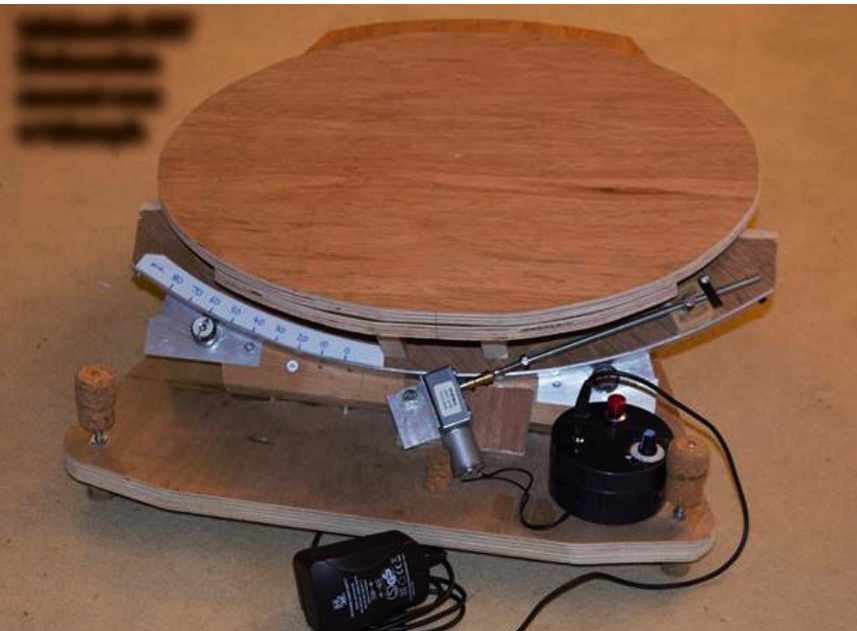
Thank you very much for putting the Dobsonian equatorial mount DIY project on your website (bit.ly/dob-platform). Here is my version of the project, which came in at about £60. I opted for a simpler drive mechanism in the form of an M6 threaded rod, coupled to the platform via an elongated nut. I also calibrated the tracking and added a ‘time left’ scale, showing how long is left before reset. I was pleasantly surprised by the tracking stability and accuracy of the design over 70–80 minutes of tracking with my 8-inch StellaLyra Dobsonian telescope. My next project will be to build a sturdy homemade altaz fork mount and tripod, so that I can use the platform with a small ED refractor (not yet purchased) for astrophotography.
Sad loss
The recent passing of Bob Mizon, the UK coordinator of the BAA’s Commission for Dark Skies was very sad and a great loss to the world of astronomy. The work he did in striving to protect our night skies knew no bounds. Bob was a long-time friend and supporter of our club, the Somerset Levels Stargazers, and often gave talks at our meetings, once inviting the village school to his mobile planetarium. In April 2022, with the help of Bob we held a 10th anniversary event based on dark skies and light pollution; our April 2023 meeting was to have featured Bob once again and although we had the option of cancelling, we decided to hold the meeting as a tribute to him and the subject so close to his heart. We will miss him.
Touching tune
It is said that where art and science meet is in the human spirit! In his letter, Bill Smith from Ayr recounted the story of astronaut Laurel Clark and Celtic rock band Runrig (Interactive, April 2023 issue). Their song ‘Somewhere’ has always been a favourite of mine, but listening to it after reading the story changed the meaning forever. Curious about the inclusion of Laurel’s voice at the end of the song, I took to YouTube to search ‘Runrig the story’ and came across a 10-minute tribute to Runrig and Laurel, which caused a severe lump in the throat. Laurel’s wake-up call on the last day of Shuttle Columbia’s flight was Runrig’s ‘Running to the Light’. She was a mission specialist with a love for music and her family and is still flying in our hearts.
ON FACEBOOK
The Sky at Night returned to our screens in April. You got in touch to let us know your thoughts.
Francisco Javier Lopez Great to have you back. One of my favourite programmes.
Richard Jeffery Glad to have it back on our screens, but half an hour once a month is not enough! I would like to see more of Pete Lawrence and his practical astronomy and astrophotography.
Matthew Terrell Always happy to see them back on the screen.
Andy Huxtable Any chance the BBC will go back to showing The Sky at Night on a monthly basis, every month, throughout the year? For 67 years they managed it with Sir Patrick.
Adrian O’Farrell Patrick would not have been happy at that gap in programming. Each and every month is what he would want. No gaps!
Steve Boyle Having to wait three months to see and hear Maggie again is far too long!
Tweet
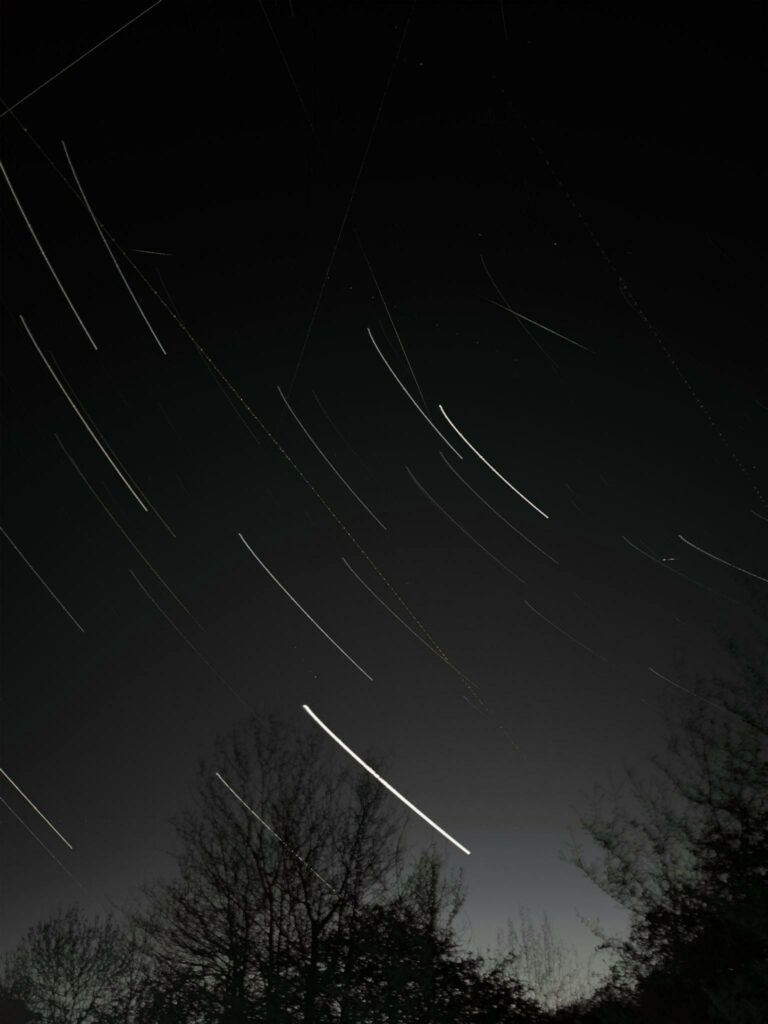
@CathAdams1973 • 20 April
@skyatnightmag Star trails on Thursday 20 April with the added bonus of a meteor too! Venus looks beautiful trailing brightly at the bottom of the image. Taken using iPhone 13 and @NightCapApp
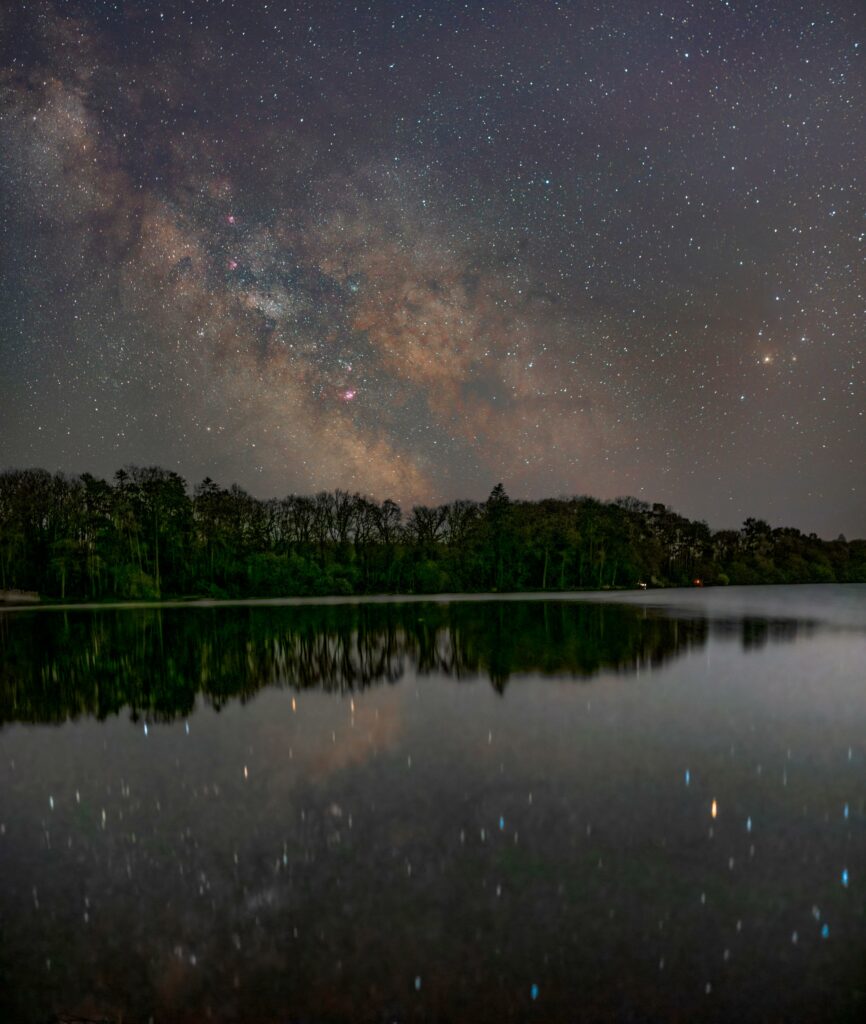
@matts_world_01 • 21 April
A lovely night at Chard Reservoir, capturing moments like this worth every moment. Just the sounds of nature to keep me company until the wee early hours. Shot with a Fuji X-T2 paired with a 7Artisans 25mm f/1.8 lens and MSM rotator. @bbcskyatnightmag
SOCIETY IN FOCUS
SIGMA: Moray’s Astronomy Club was formed in 2000 with the aim to make astronomy accessible to anyone and everyone, from experienced amateurs to complete novices. Members have a wealth of knowledge and experience, and are always keen to share this with others. We have a growing membership from all areas of Moray and even as far afield as Aberdeen, Inverness and Aviemore.
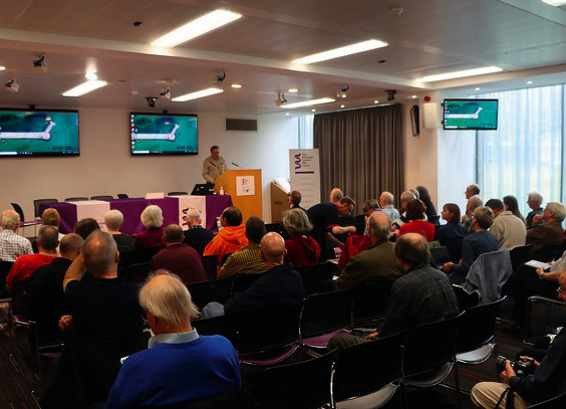
Club meetings are a mix of in-person and online when it’s not possible for a speaker to visit in person – such as a recent talk by a speaker from the Space Telescope Science Institute in Baltimore, USA. We meet at 7:30pm on the first Friday of every month at Lhanbryde Community Centre, and each year we have a full programme of speakers.
We strive to make meetings as diverse and interesting as possible, and regularly hold public observing sessions when members of the public are given guided tours of the night sky. Other outreach activities include delivering talks to local interest groups like schools and the Scouts. In 2022, SIGMA was proud to support the British Astronomical Association’s Autumn Weekend in Elgin, attended by guests from the length and breadth of the UK.
SCOPE DOCTOR
Our equipment specialist, Steve Richards, cures your optical ailments and technical maladies
Email your queries to scopedoctor@skyatnightmagazine.com
I have a Sky-Watcher 100ED which I use for astrophotography, but find my EQ5 Pro mount too heavy to use, as I only have one good arm. Can you suggest an alternative mount?
PHIL HERBERT
Your existing telescope and equatorial mount are fairly well matched, as the EQ5 Pro has a carrying capacity of 6.5kg for imaging and your 100ED and ASI camera come in comfortably under that weight. A lighter mount will be less suitable for astrophotography and not much easier to handle, so a better solution would be to resolve the handling issue directly to help with your limited mobility.
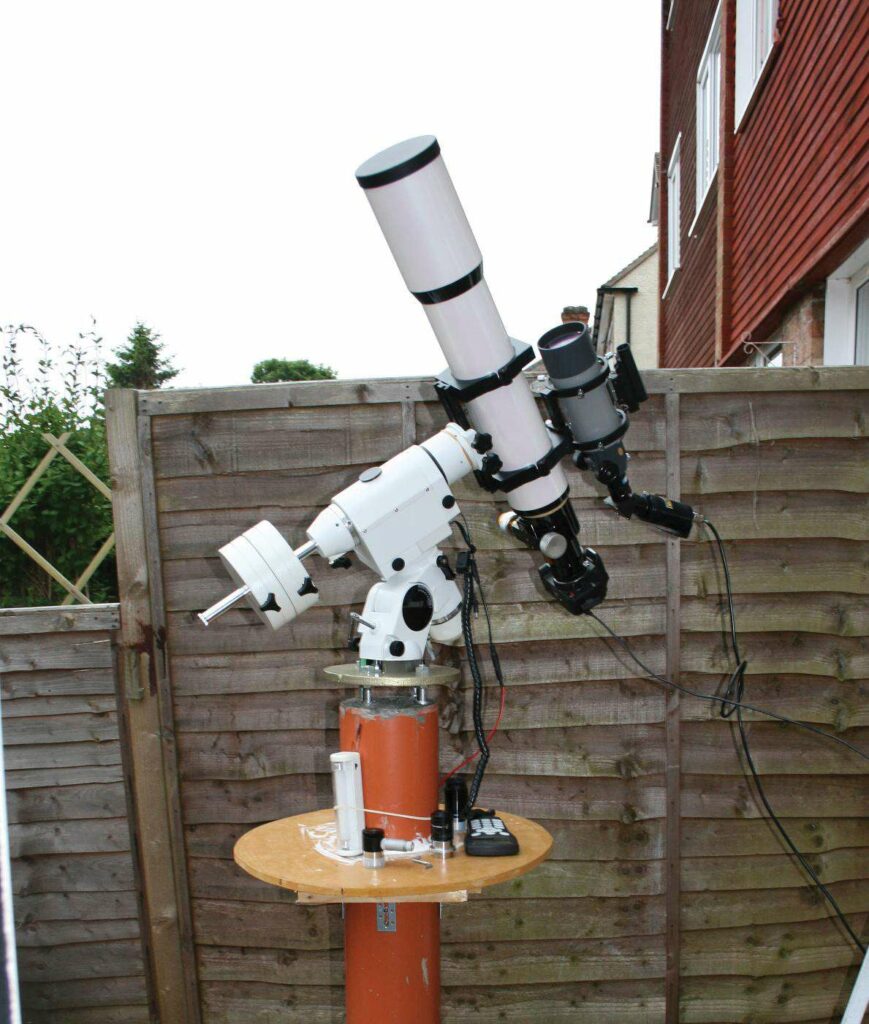
Perhaps now is the time to consider a permanent mounting in your garden by installing a fixed pier so that the mount and telescope can be permanently set up ready for your use. This would get rid of the need for a polar alignment procedure and will completely remove the hassle of connecting everything up for each imaging session. You’d simply uncover the mount and telescope, turn on, carry out a star alignment and start enjoying your hobby with equipment that you are already acquainted with, and that you can move around unimpeded by tripod legs.
Steve’s top tip
What is a Herschel prism?
A Herschel prism, also known as a Herschel wedge, allows you to observe the Sun safely in white light. A wedge-shaped prism mounted in an enclosed diagonal refracts the majority of sunlight (over 95 per cent) that falls onto it away from the observing eyepiece, dissipating the light and heat. The wedge is inclined at a convenient angle so its front face reflects the remaining 5 per cent of sunlight towards the eyepiece. This light is still too bright for direct observing, so it passes through a built-in neutral density (ND) filter first, to reduce its intensity equally at all visible wavelengths and bring it to a safe level.